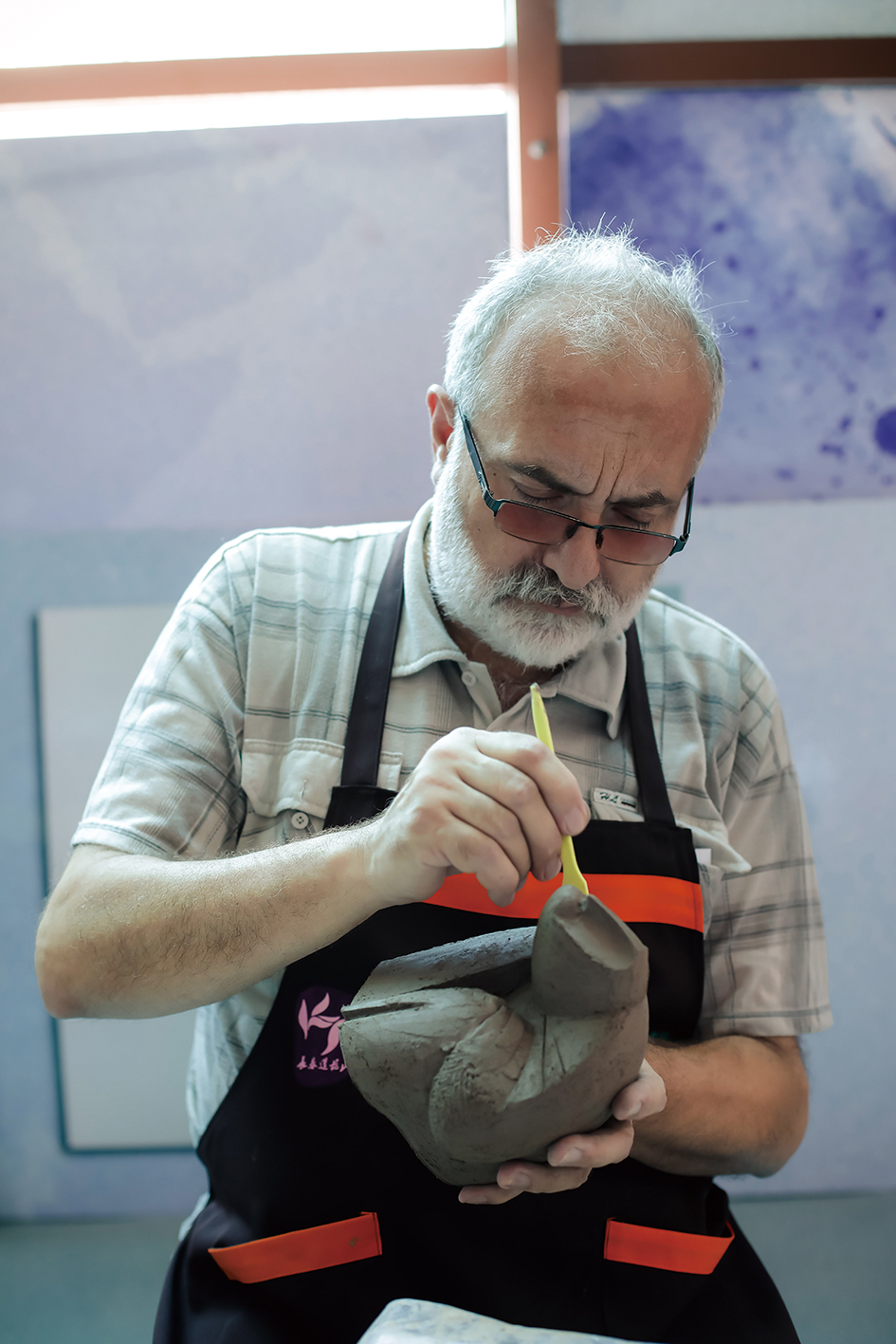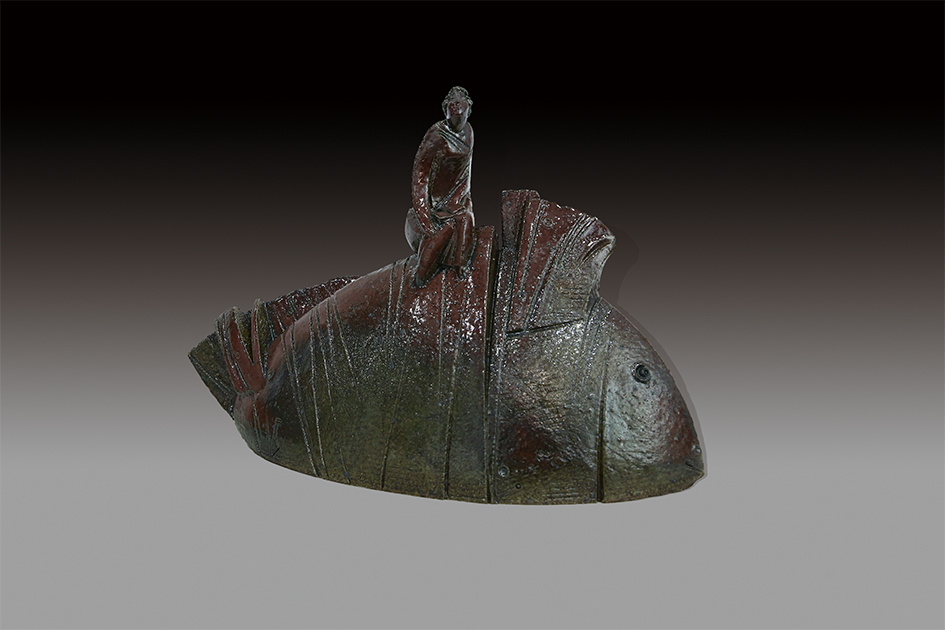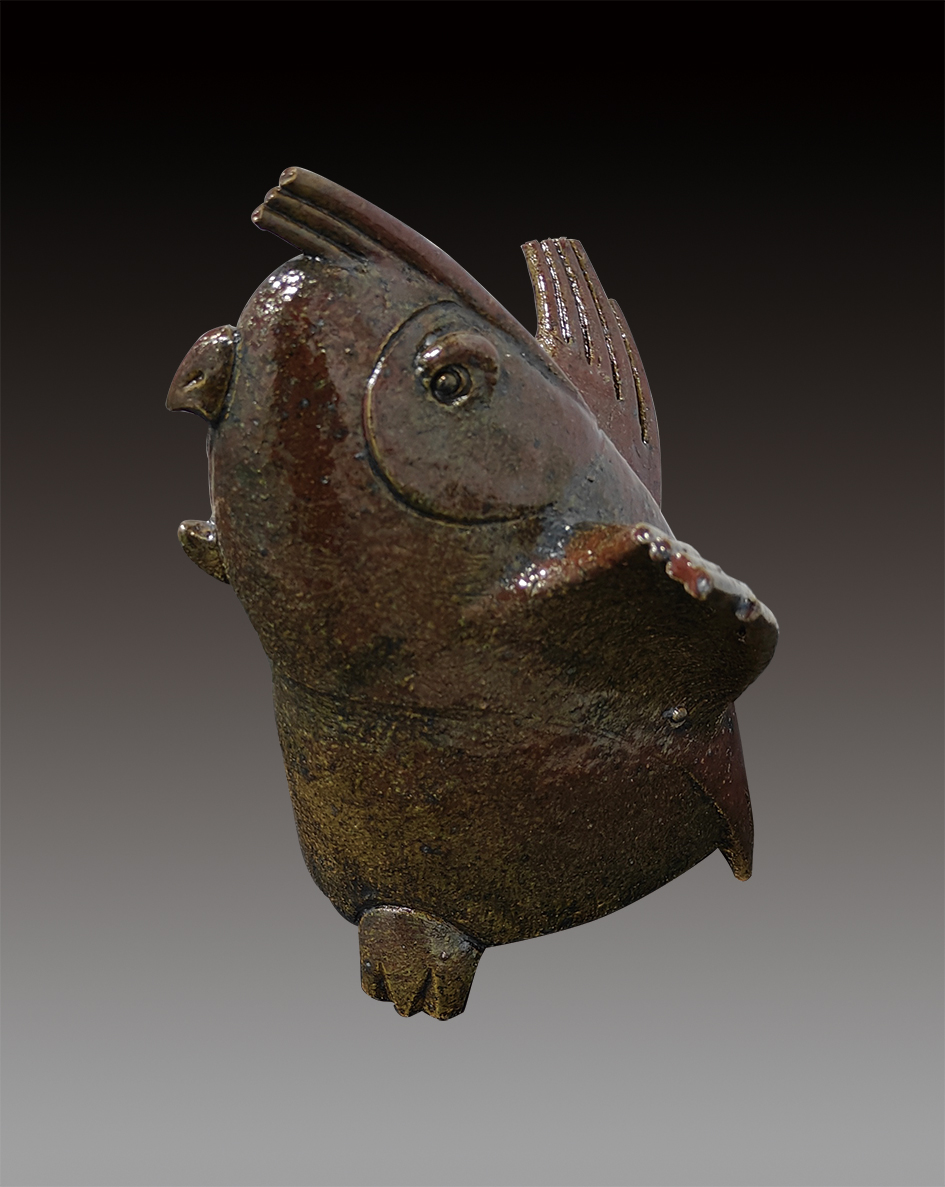
Byero Georgiy is a Ukrainian ceramist and a member of the Ukrainian Artists Union. He has participated in hundreds of ceramic exhibitions and seminars in Ukraine, France, China, and other countries. His artworks are rich in imagination and exquisite in technique.
In the creative universe of Ukrainian ceramist Byero Georgiy, Untitled II and Untitled III emerge as a pair of water fables refined by fire, casting the ancient ripples of the Dnieper River with the spatial poetics of modern sculpture into the clay. While Untitled II reconstructs ancient legends through the image of a figure dwelling atop a fish’s back, Untitled III deconstructs natural life with a singular fish-head motif. Bridging the coiling technique of traditional hand-built ceramics and the abstract language of modernism, these two artworks explore the eternal theme of coexistence between humanity and nature.
Georgiy is intimately attuned to the symbolic resonance of the fish in Ukrainian folk culture—from the wave-like patterns on painted pottery of Trypillia culture to Cossacks’ legends of “soul-bearing fish.” These cultural codes are translated into vivid narratives in clay. In Untitled II, the relationship between figure and fish echoes the symbolic forms of Kievan Rus’ ceramic figurines, but the ceramist disrupts traditional proportions with a sense of weightlessness in modern sculpture. The curve of the human torso interlocks dynamically with the arc of the fish’s back, capturing a moment of “swimming together” in clay. The flowing glaze across the fish’s body recalls the shimmering light on the Dnieper River as the ice melts. By contrast, Untitled III isolates the fish’s head from the rest of its form. Geometric planes slice through the gills, while the unglazed clay texture around the eye socket contrasts sharply with the shimmering green glaze—an intentional material clash. This interplay echoes the Ukrainian ceramic aesthetic of “completeness through imperfection,” while employing the deconstructive logic of modernism to turn the fish head into a symbolic fragment of nature itself.
Most strikingly, both works translate the water element into clay tactilely. The pleats of the figure’s garment in Untitled II use incised lines inspired by Chernihiv’s ceramic carving techniques, reinterpreted here as fluid ripples. Untitled III features a hidden hollow chamber inside the fish head; when tapped, it emits a soft resonance—an acoustic narrative drawing on the tradition of Ukrainian clay flutes, reimagined as an echo from the ocean depths. Georgiy gives clay the properties of water through fire: the high-temperature firing of Untitled II produces a moist luster, as if the form had just emerged from the river, while the surface of Untitled III shimmers with a scale-like texture created through the kiln transformation process. In these works, traditional and modern techniques manifest as different forms of water.
This creative revitalization of cultural gene offers viewers a deep sense of revelation. While the figure in Untitled II still evokes the folk tale of “a fish carrying a person across,” Untitled III distills that myth into a metaphor for the relationship between humans and nature in the age of modernity. Georgiy shows that tradition is not a static artifact but a fluid force. He transforms the geometric motifs of Trypillia ceramics into the decorative skin of the fish, infuses the spatial concepts of modern sculpture into the form of the fish head, and arranges the two works in dialogue, like streams converging in an exhibition space. Just as the Dnieper River reflects both ancient kilns and contemporary bridges, the ceramist uses the symbiotic form of the figure and the fish to reveal the essence of human civilization through clay: Only by maintaining reverence for nature, like the figure in Untitled II, and reimagining our perceptions through abstraction, like the form of Untitled III, can cultural memory retain its vitality in the river of modernity. In the end, what these two works distill through fire is the dual philosophy of water—it is both the cradle of civilization and a medium of deconstruction and rebirth. Clay is the form water inhabits in its temporary dwelling across time and space.

Untitled II

Untitled III